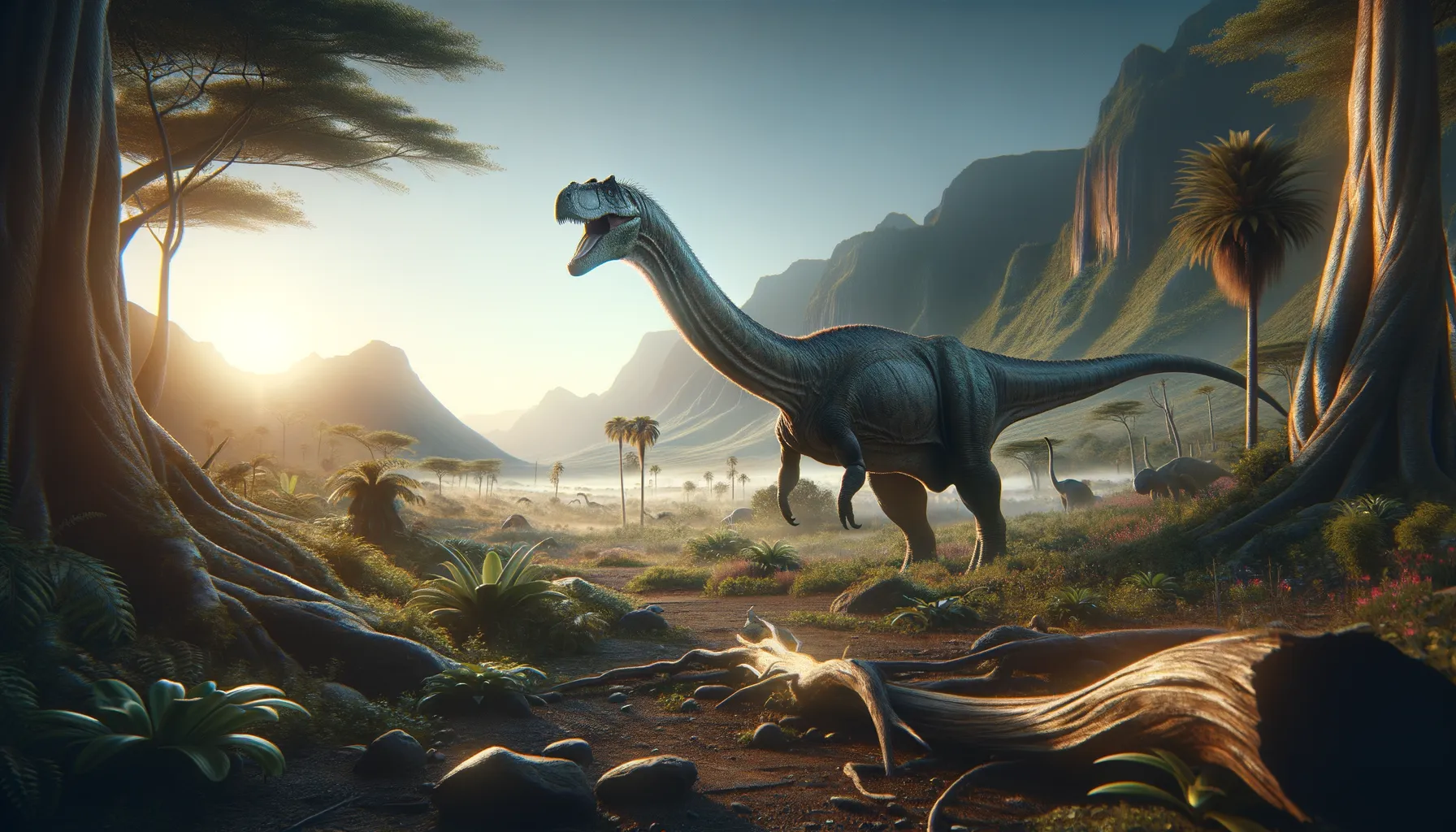
Xingxiulong
Giant of the early Jurassic world.
Period
triassic
Length
Measured close to 8 meters long.
Height
Roughly about 2 meters tall at the hip.
Weight
Estimated to weigh around 1.5 to 2 tons.
Xingxiulong was a sauropod dinosaur, known for its long neck and herbivorous lifestyle, living during the early Jurassic period. This dinosaur was part of a diverse group of giant, long-necked dinosaurs, contributing to our understanding of the evolution and diversification of these creatures. It inhabited what is now China, where its fossils were discovered, offering valuable insight into the early stages of sauropod evolution.
Diet
Xingxiulong was herbivorous, primarily feeding on a variety of plants. Its long neck allowed it to reach vegetation that was otherwise inaccessible to other animals. It likely stripped leaves using its peg-like teeth.
Hunting
As a herbivore, Xingxiulong did not hunt for food. Instead, it foraged for plants and vegetation, utilizing its long neck to reach a wide range of foliage.
Environmental challenges
Xingxiulong faced environmental challenges such as changes in climate and vegetation during the Jurassic period. As an herbivore, it had to adapt to fluctuations in plant availability. It also needed to watch out for larger predators of the time.
Speed
Likely slow-moving due to its size.
Lifespan
Could live for several decades.
First discovery
Discovered in China in 2017.
Fun Facts
- Xingxiulong was a medium-sized dinosaur that lived during the Early Jurassic period.
- It was discovered in Yunnan Province, China, an area known for its rich fossil sites.
- Xingxiulong was a sauropod, which is a type of dinosaur known for long necks and tails.
- Despite being a sauropod, Xingxiulong was relatively small compared to its later relatives, growing up to about 5.4 meters long.
- Its name, Xingxiulong, means 'Xingxiu dragon', after the village where it was found.
- Xingxiulong helps scientists understand the early evolution of sauropods, showing both primitive and more advanced features.
- This dinosaur's fossilized remains were first described by scientists in 2017.
Growth and Development
Xingxiulong underwent significant growth, from small hatchlings to massive adults. The growth rate of such dinosaurs was likely rapid, ensuring survival in a world full of predators. They may have formed groups to protect the young during their vulnerable stages.
Habitat
Xingxiulong inhabited forested environments with plenty of vegetation to support its herbivorous diet. These environments provided both food and cover from predators. It likely frequented areas close to water sources as well.
Interaction with other species
Xingxiulong would have interacted with various other species, including other herbivores and carnivorous dinosaurs. It may have coexisted with other sauropods, occasionally competing for resources. Its long neck might have given it an advantage in accessing higher vegetation, reducing competition.
Natural lifespan
Xingxiulong could naturally live for several decades, assuming it avoided predators and other threats.
Reproduction
Xingxiulong reproduced by laying eggs, like other dinosaurs of its kind. Nests would be constructed in secure locations, possibly covered with vegetation for protection. The care of the young after hatching remains speculative, but grouping together might have been a strategy.
Social behaviour
Xingxiulong may have exhibited some social behaviors, living in groups to provide protection against predators. Group living would have also facilitated easier foraging and possibly coordinated migration in search of food.
Fossil locations
The only known fossils of Xingxiulong were discovered in China, providing crucial information on its physical form and lifestyle. These fossils were primarily found in what would have been lush, vegetated areas millions of years ago. Its discovery has enhanced the understanding of early sauropod evolution and distribution.
